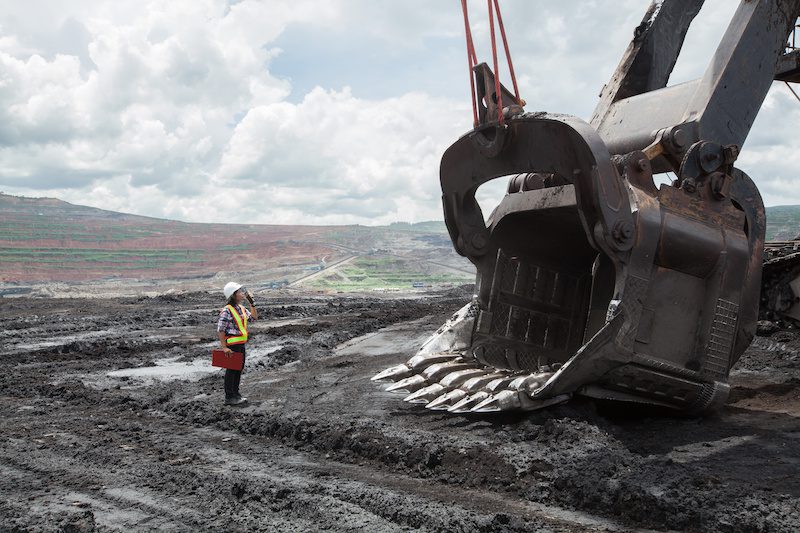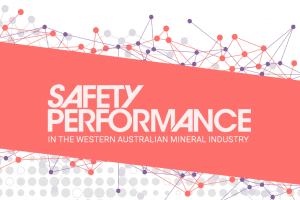Mining safety is a broad term referring to the practice of controlling and managing a wide range of hazards associated with the life cycle of mining-related activities. Mine safety practice involves the implementation of recognised hazard controls and/or reduction of risks associated with mining activities to legally, socially and morally acceptable levels.
While the fundamental principle of mine safety is to remove health and safety risks to mine workers, mining safety practice may also focus on the reduction of risks to plant (machinery) together with the structure and orebody of the mine. For example: If an underground coal mine was to catch fire from a coal heating or spontaneous combustion event, the obvious risks are to workers. However, other risks exist such as the loss of the mine assets/equipment, the pollution of the atmosphere/subsurface water from the fire plus the potential loss of the coal resource itself. For these reasons, good safety practice should focus on the control of hazards to personnel, plant & equipment and the mine’s core assets.
Typical safety management techniques involve the implementation of a structured mine safety management system involving response plans, procedures, policies and codes of practice for the management of hazards of the particular operation. A safety management system formally addresses the range of dynamic and static mining hazards.
Elements of the system may include:
-A management framework – for defining the system and its’ limitations;
-A leadership and accountability framework – for defining who will be responsible and accountable for the mine safety management system;
-Performance and planning framework – which defines the plans, the performance benchmarks and the goals of the organisation in respect of safety performance;
-Implementation framework – how the system will be implemented including defining critical documentation, document management, licensing requirements;
-Operational risk control framework – for defining how the mine will address the risks encountered in that particular operation, how change is managed, what methodology applies to the identification and documentation of risks, hazard assessment;
-Communication and consultation framework – how the mine will communicate hazards and consult with the workforce to improve safety;
-Behavioural and competence framework – what training is required, what is the site’s defined minimum ‘safe behaviours’ how competence is measured and monitored;
-Incident management – how the site will investigate and action mine safety incidents;
-Emergency management framework – how the mine will respond to the range of possible emergencies and how it prepares for emergencies;
-Audit and Assurance – how the mine independently verifies that it has taken to address hazards in a proactive and methodical way.
Safety is a multi-disciplinary field of practice that requires practitioners to display a broad knowledge, skill and competence that is often unique to the particular hazard/s encountered with a specific mining operation.
Typical knowledge and skills sets involve mine safety practitioners gaining a depth of understanding of:
-Chemistry;
-Construction (Building Structures/Tailings/Dam/Walls);
-Electrical engineering principles (including use of electrical equipment in hazardous locations)
-Ergonomics;
-Explosives & Blasting;
-Human resources;
-Fire Control;
-Lifting & crane operations
-Materials handling;
-Machinery operation practices;
-Mine geology and strata;
-Mining rescue and emergency management.
-Occupational hygiene;
-Ventilation;
-Radiation;
-Safety laws and regulations;
-Thermal comfort
-Training and education;
-Vibration;
-Worker health.
It is recognised within mining safety practice that specialists in the above disciplines will be engaged to assist in scoping, researching and providing advanced methodologies to control hazards.
Mining hazards can be categorised into several subcategories related to the mine lifecycle. For example exploration hazards, mining development hazards, mine production hazards and mine closure hazards.
Mining hazards can also be unique to the ore type mined and whether the operations of the mine are conducted on the surface or underground.
For example, Mine workers conducting exploration drilling may work in remote areas and be subject to temperature extremes, exposure to dust, noise and chemicals from drilling operations, manual handling of heavy equipment and core samples, potentially hazardous equipment, snake bites and other animal risks, weather conditions. Mining safety practice will aim to eliminate or control the risk associated with the hazards of the activity.
Future of safety
Safety has evolved to become a key element of successful and productive mining operations in the 20th century. Several emerging issues in mine safety include the use of autonomous equipment, impact of programmable electronic systems, psychosocial and cultural hazards and the impact of artificial intelligence (and subsequent ethics surrounding hazard control).
Notable organisations impacting mine safety include the ILO and the Centre for Disease Control and Prevention NIOSH Mining, the Mining Safety & Health Administration MSHA and Simtars
You may like to read our content on:














Add Comment